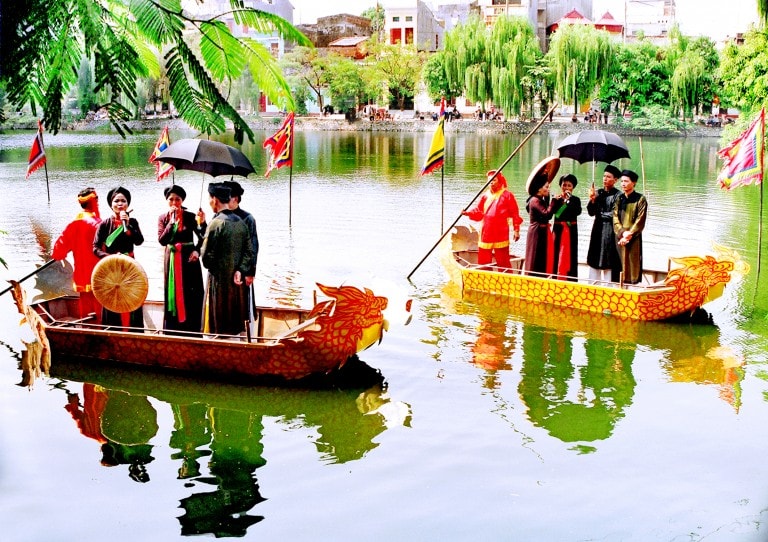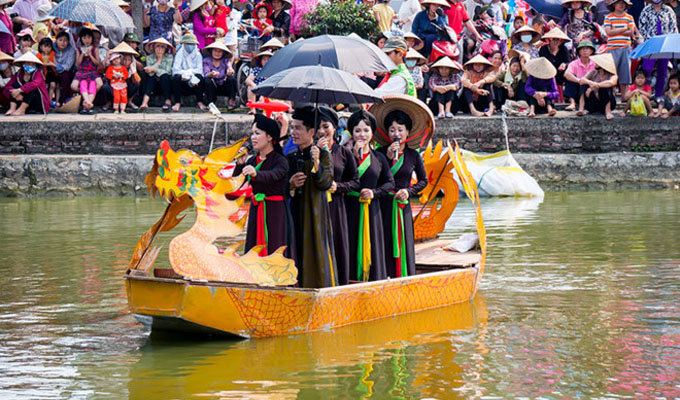Quan họ singing in Bac Ninh province
Quan họ singing is a traditional folk music style that originated in the northern region of Vietnam, particularly in the Bac Ninh province. It is a form of alternating love duet singing performed by male and female singers.

Quan họ singing is typically performed during festive occasions, cultural events, and traditional rituals, as well as informal gatherings among friends and family. The singers, known as “quan họ singers,” are organized into two groups, representing the “lien anh” (older brothers) and “lien chi” (older sisters) groups.

The songs in quan họ singing are typically love ballads that express various themes of love, courtship, and relationships. The lyrics often involve teasing, flirting, and poetic exchanges between the male and female singers. The songs are characterized by the use of intricate melodies, rich harmonies, and distinctive vocal techniques.
During a quan họ performance, the singers typically form two separate rows facing each other, with the male singers on one side and the female singers on the other. The singers take turns singing verses and responding to each other’s melodies in a call-and-response fashion.
Quan họ singing is not only about the music but also emphasizes the interaction and harmony between the singers. It is often accompanied by traditional musical instruments such as the đàn nguyệt (moon-shaped lute), đàn nhị (two-stringed fiddle), and đàn tranh (16-string zither).

In 2009, quan họ singing was recognized as an Intangible Cultural Heritage by UNESCO, highlighting its cultural significance and efforts to preserve and promote this unique art form.
Quan họ singing continues to be cherished and celebrated as an important part of Vietnamese cultural heritage, showcasing the traditional music, poetic expressions, and the beauty of human connections through music.


